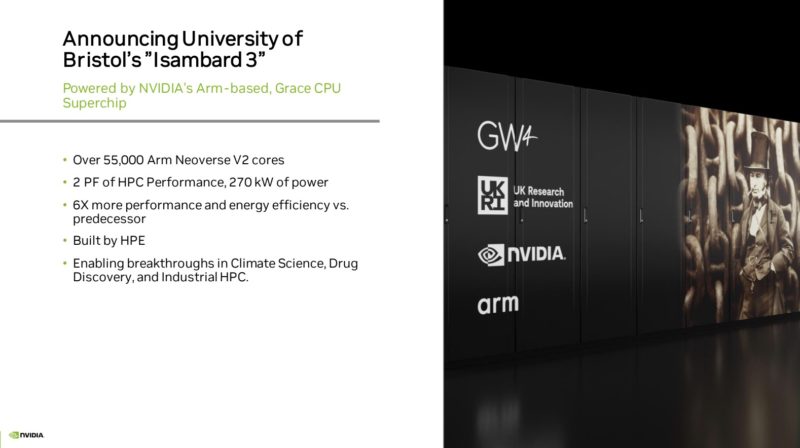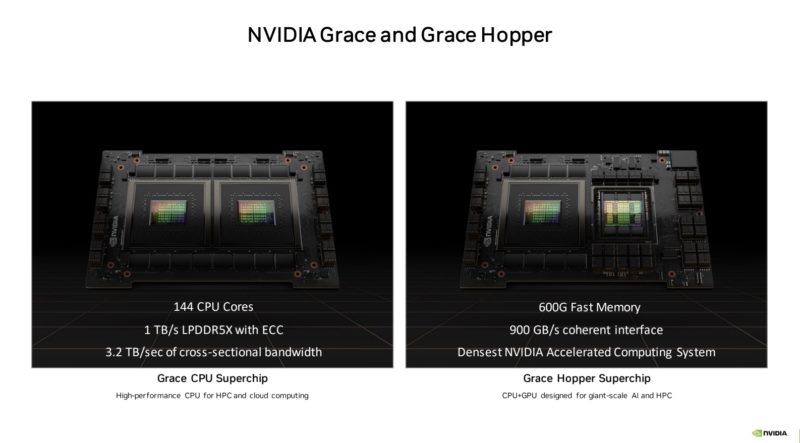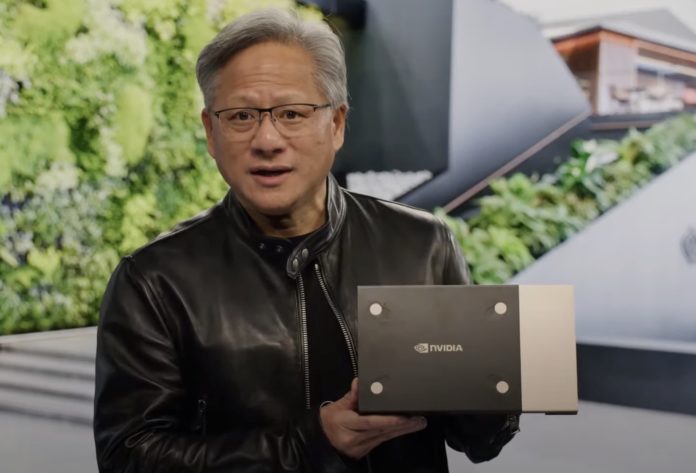That title may be a bit challenging, but it is valid. With the UK-based Isambard 3 supercomputer NVIDIA Grace will have a 2.7PF supercomputer that NVIDIA is pointing out will be one of the three greenest. It is using non-accelerated for the three greenest claim. Perhaps the bigger part of this announcement is that it is a vote of confidence for Grace.
NVIDIA Notches a Modest Grace Superchip Win at ISC 2023
Isambard 3 is set to have 384 Arm-based NVIDIA Grace CPU Superchips. Since we would expect each to be ~144 cores each (2x 72 chip halves unless there is a different configuration for yield reasons) that will put the core count at over 55,000 cores. That FP64 performance is set to occur in under 270kW of power. We will note that smaller systems tend to perform better on an efficiency metric because they have smaller network radix. Still, that is around 700W/super chip all-in with networking.

For those who need a quick refresher, here are the key specs of the NVIDIA Grace CPU Superchip (2x 72 core chips) and the Grace Hopper which is 1x 72 core chip and 1x NVIDIA H100. Memory and interconnect are integrated into each.

These chips also use the Arm Neoverse V2 cores which is Arm’s high-performance core compared to the N-series scale-out cores we often see on cloud instances. The recent AmpereOne with 192 Cores may sound like significantly more, but the V2 cores of Grace should be much faster and with more memory bandwidth. We have not tested Grace yet, but if NVIDIA is not faster than Ampere’s cloud cores, then Grace is in trouble and we doubt it would be winning CPU-only machines.
Final Words
Some folks have wondered why we have not seen more NVIDIA Grace in the market. My personal belief is that NVIDIA has been working on the platform and we will see more in the coming weeks. Many market commentators discuss per-core performance differences or that building an Arm chip is as easy as getting an Arm license. Many folks underestimate how much is required to have a platform that supports a diverse set of configurations that are required to be sold in OEM systems. That work is where Ampere did a better job than Cavium/ Marvell ThunderX(2), albeit with a more mature underlying ecosystem.
Hopefully, we get to show you these in more detail soon as they are one of our most anticipated CPUs of 2023.





Is 100kW per petaflop really considered a good metric of efficiency? That seems shockingly high on the power consumption.
https://top500.org/lists/top500/2023/06/
The top system on the HPC list is 22,703kW for 1,194PF of performance. That’s ~19kW/PF. This is 5x that much. What am I missing?
Frontier is an accelerated system, meaning it has some form of accelerator to offload calculations from the CPU. In the example you gave the accelerator is a GPU. Isambard 3 is a CPU-only system and they are far less energy-efficient. Nvidia are claiming the new supercomputer is efficient for a CPU-only design.
Thank you for the explanation.
I’d argue whatever does the work most efficiently is the most efficient, regardless of usage of “specialized” hardware like GPUs. But I’m not a marketing person.
I don’t think Nvidia or anyone else associated with the machine claimed that Isambard 3 is the most efficient. The claim is that it’s six times more efficient than it’s predecessor.
The distinction of CPU-only versus accelerated is more than academic. A large amount of extra work is required to accelerate large codebases. There are many workloads that haven’t been accelerated or just don’t benefit that much from GPU acceleration. As time goes on, more and more is being accelerated.
From the article:
“With the UK-based Isambard 3 supercomputer NVIDIA Grace will have a 2.7PF supercomputer that NVIDIA is pointing out will be one of the three greenest.”
One of the three greenest is a bold claim for sure.
it’s a mistake in the article or some communications mix-up. Here is what is written in Nvidia’s press release (https://nvidianews.nvidia.com/news/nvidia-grace-drives-wave-of-new-energy-efficient-arm-supercomputers):
“It will achieve about 2.7 petaflops of FP64 peak performance and consume less than 270 kilowatts of power, ranking it among the world’s three greenest non-accelerated supercomputers.”
Nvidia’s press release on their website says “It will achieve about 2.7 petaflops of FP64 peak performance and consume less than 270 kilowatts of power, ranking it among the world’s three greenest non-accelerated supercomputers.”